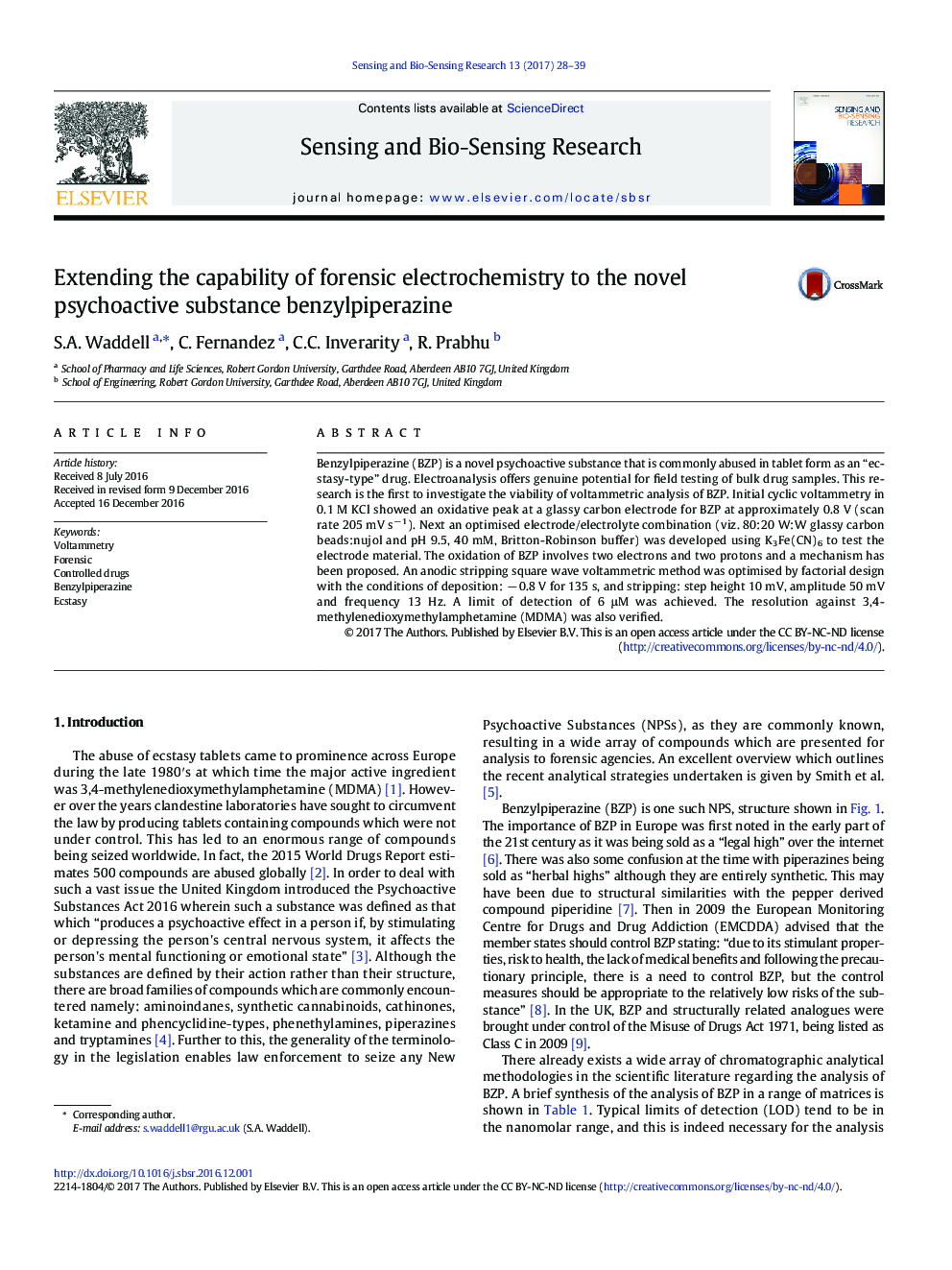| Article ID | Journal | Published Year | Pages | File Type |
|---|---|---|---|---|
| 5019638 | Sensing and Bio-Sensing Research | 2017 | 12 Pages |
â¢For the first time the voltammetric analysis of the novel psychoactive substance benzylpiperazine is reported.â¢The methodology has been optimised and a mechanism has been proposed for the oxidation of benzylpiperazine.â¢Achieved limit of detection of 6 μM, accuracy of 0.08% and resolution against MDMA.
Benzylpiperazine (BZP) is a novel psychoactive substance that is commonly abused in tablet form as an “ecstasy-type” drug. Electroanalysis offers genuine potential for field testing of bulk drug samples. This research is the first to investigate the viability of voltammetric analysis of BZP. Initial cyclic voltammetry in 0.1 M KCl showed an oxidative peak at a glassy carbon electrode for BZP at approximately 0.8 V (scan rate 205 mV sâ 1). Next an optimised electrode/electrolyte combination (viz. 80:20 W:W glassy carbon beads:nujol and pH 9.5, 40 mM, Britton-Robinson buffer) was developed using K3Fe(CN)6 to test the electrode material. The oxidation of BZP involves two electrons and two protons and a mechanism has been proposed. An anodic stripping square wave voltammetric method was optimised by factorial design with the conditions of deposition: â 0.8 V for 135 s, and stripping: step height 10 mV, amplitude 50 mV and frequency 13 Hz. A limit of detection of 6 μM was achieved. The resolution against 3,4-methylenedioxymethylamphetamine (MDMA) was also verified.
Graphical abstractDownload high-res image (140KB)Download full-size image
